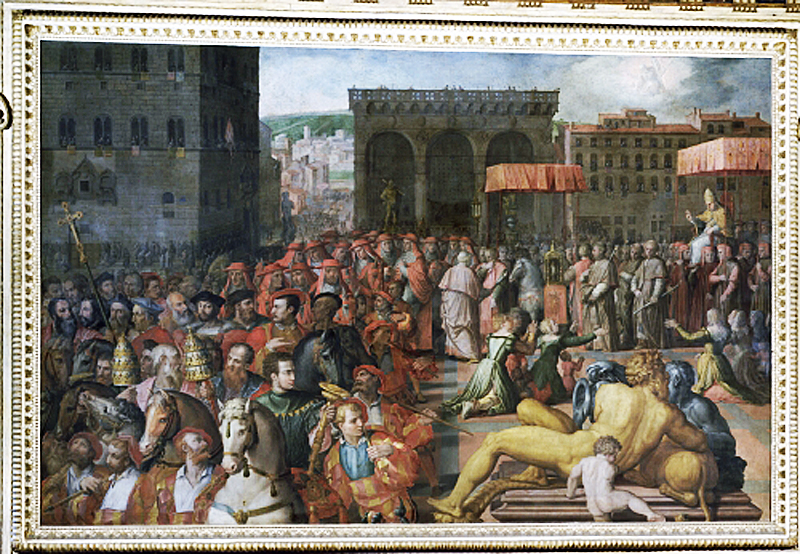Two particolar details
Two particolar details in "the arrival of Leo X in Florence"
Giovanni de' Medici, Lorenzo il Magnifico's son, was elected Pope in 1513. Only two years later he officially entered in Piazza Signoria acclaimed by Florentine population: the Pope caught the opportunity to celebrate his family who came back at the power of the city after the Republican period.
In less than a month the main artists of Florence sculpted new statues and the city was completely decorated to feast his arrival.
Giorgio Vasari and Giovanni Stradano painted the "Arrival of the Pope In Florence" between 1555-1562. It is now preserved inside Palazzo Vecchio, in a room entitled to Leo X that completely tells us about his life.
Don't you notice something is missing in the painting? I am speaking about the Uffizi, the first museum to be opened to the public in 1581!! They still didn't exist in 1555; In fact the duke Cosimo I commissioned the edification only in 1560.
Have a look now at the "Loggia dei Priori" in the background: the statue on the right is Donatello's "Judith and Holofernes" before its movement on the left of the actual main entrance of the palace. At his place today is the "Rape of the Sabine" by Giambologna commissioned only in 1583 by Francesco I. Palazzo Vecchio hides many treasures, come with us to discover them!
Altri articoli
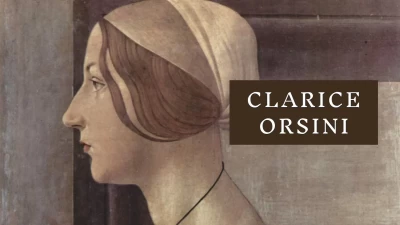
Clarice Orsini
Chosen as Lorenzo de' Medici's bride in 1467, the marriage solidified the Medici family's political influence and resulted in nine children.
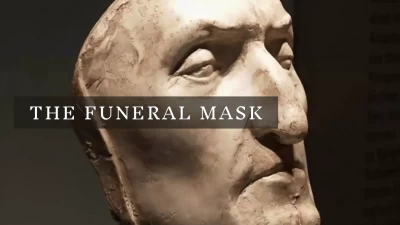
The funeral mask
The Dante funeral mask, once thought real, is now believed a lost sculptural portrait. Donated to Florence in 1911, found in Ravenna in 1830.
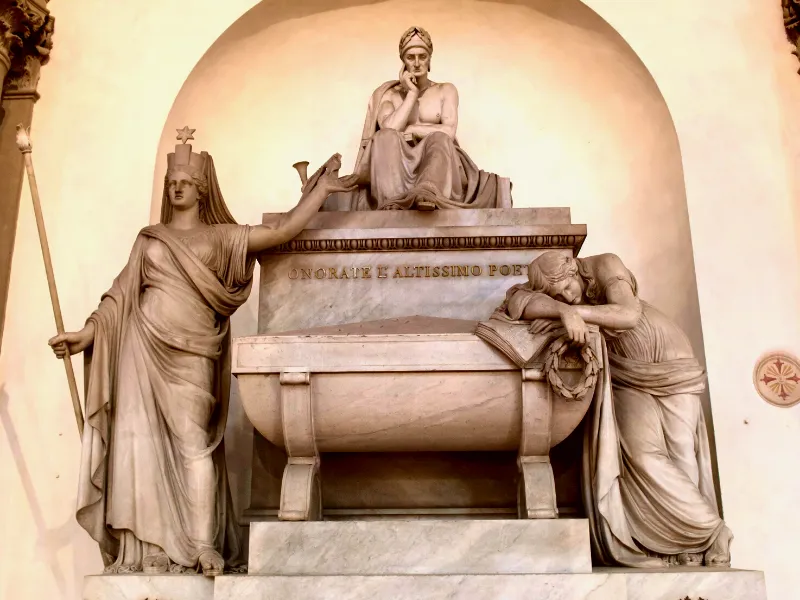
Were was Dante Buried?
Enrico Pazzi decorated even the base of the statue with four heraldic lions symbol of the Florentine Republic. The sculptor and his subject are united by a strange circumstance: Dante was born in Florence and died...
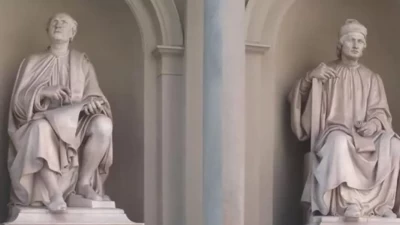
What are these two men
Even the genius Leonardo studied it and reproduced wooden models of the machines Brunelleschi employed to move the material he needed!


